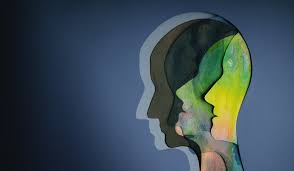Dissociative disorders are a group of mental health conditions characterized by disruptions or discontinuities in a person’s consciousness, memory, identity, or perception. These disorders are often a result of severe trauma, such as abuse or neglect, particularly during childhood. Individuals with dissociative disorders may feel disconnected from themselves or the world around them, experiencing gaps in memory, identity confusion, or even the sensation of being outside their bodies. This article explores the different types of dissociative disorders, their symptoms, causes, diagnosis, and treatment options.
Types of Dissociative Disorders

There are three main types of dissociative disorders recognized by the Diagnostic and Statistical Manual of Mental Disorders (DSM-5):
1. Dissociative Identity Disorder (DID)
Dissociative Identity Disorder, formerly known as Multiple Personality Disorder, is characterized by the presence of two or more distinct personality states or identities within a single individual. Each identity may have its own name, age, gender, history, and set of characteristics, including unique ways of thinking, speaking, and behaving. Individuals with DID often experience memory gaps for everyday events, personal information, or traumatic events that cannot be explained by ordinary forgetfulness.
The shifts between identities, also referred to as “switching,” can be triggered by stress or traumatic memories. These shifts can be sudden and dramatic or more gradual. DID is often associated with severe trauma, particularly during early childhood, such as prolonged abuse or neglect.
2. Dissociative Amnesia
Dissociative Amnesia involves an inability to recall important personal information, usually of a traumatic or stressful nature, that is too extensive to be explained by ordinary forgetfulness. The memory loss in dissociative amnesia can be localized (specific to an event or period), selective (recalling some but not all aspects of an event), or generalized (encompassing the person’s entire life history). In some cases, individuals with dissociative amnesia may experience a fugue state, a rare and severe form of amnesia characterized by sudden, unexpected travel away from one’s home or workplace, along with confusion about one’s identity or the assumption of a new identity.
3. Depersonalization/Derealization Disorder
Depersonalization/Derealization Disorder is characterized by persistent or recurrent episodes of depersonalization (feeling detached from oneself, as if observing oneself from outside the body) and/or derealization (experiencing the external environment as unreal or dreamlike). Individuals may feel emotionally numb, as if living in a fog or a dream. These experiences can be highly distressing and impair a person’s daily functioning. Unlike other dissociative disorders, individuals with depersonalization/derealization disorder typically remain aware that their experiences are not real, which can further contribute to feelings of anxiety and depression.
Causes and Risk Factors

Dissociative disorders are most commonly associated with overwhelming stress or trauma, particularly during early childhood, when a child’s sense of self is still developing. Common traumatic experiences linked to the development of dissociative disorders include:
- Physical, emotional, or sexual abuse: Prolonged abuse during childhood is a significant risk factor for developing dissociative disorders. The dissociative symptoms are thought to be a coping mechanism, allowing the person to detach from the reality of their trauma.
- Neglect or abandonment: Lack of emotional support and care during critical developmental periods can contribute to dissociative symptoms.
- Witnessing domestic violence: Exposure to violent environments can create a need for psychological escape, leading to dissociation.
- Natural disasters or accidents: Experiencing life-threatening situations can trigger dissociative symptoms as a way to cope with overwhelming fear and helplessness.
Biological factors, such as genetic predisposition, may also play a role, although the exact mechanisms are not fully understood. Neurobiological studies suggest that trauma-related dissociation may involve alterations in brain areas responsible for memory, consciousness, and self-perception, such as the hippocampus and amygdala.
Symptoms of Dissociative Disorders
The symptoms of dissociative disorders can vary widely depending on the type of disorder and the individual’s circumstances. Common symptoms include:
- Memory loss (amnesia) for certain time periods, events, people, or personal information.
- Sense of being detached from oneself (depersonalization).
- Feeling that the world is unreal or distorted (derealization).
- Identity confusion or identity alteration, where a person may feel as though there are different identities within them.
- Significant distress or problems in social, occupational, or other areas of functioning.
These symptoms can range from mild to severe and may disrupt a person’s ability to function normally in daily life.
Diagnosis
Diagnosing dissociative disorders can be challenging due to the complex and overlapping symptoms with other mental health conditions, such as post-traumatic stress disorder (PTSD), depression, anxiety disorders, and personality disorders. A thorough evaluation by a mental health professional is essential for an accurate diagnosis. The evaluation typically includes:
- Clinical interviews: To gather detailed information about the person’s symptoms, history of trauma, and impact on their daily life.
- Psychological testing: To assess the presence of dissociative symptoms and rule out other potential causes.
- Medical examination: To exclude any neurological or medical conditions that might explain the symptoms.
The clinician may use specific diagnostic tools, such as the Dissociative Experiences Scale (DES) or the Structured Clinical Interview for DSM-IV Dissociative Disorders (SCID-D), to aid in the diagnosis.
Treatment Options

Treatment for dissociative disorders often involves a combination of psychotherapy, medication, and support to help the individual manage their symptoms and address underlying trauma. The primary goals of treatment are to integrate the dissociative parts of the self, improve functioning, and reduce distress.
1. Psychotherapy
Psychotherapy, or talk therapy, is the cornerstone of treatment for dissociative disorders. Several therapeutic approaches have been found effective, including:
- Cognitive Behavioral Therapy (CBT): Helps individuals identify and change distorted thinking patterns and behaviors related to their trauma and dissociative symptoms.
- Dialectical Behavior Therapy (DBT): Focuses on developing skills to manage emotions, reduce self-destructive behaviors, and improve interpersonal relationships.
- Eye Movement Desensitization and Reprocessing (EMDR): A trauma-focused therapy that helps individuals process and integrate traumatic memories, reducing their impact.
- Psychodynamic Therapy: Aims to uncover and work through unconscious conflicts stemming from past trauma.
2. Medication
While there are no medications specifically approved for treating dissociative disorders, medications may be prescribed to address co-occurring symptoms, such as depression, anxiety, or PTSD. Antidepressants, anti-anxiety medications, and antipsychotic drugs may be used as part of a comprehensive treatment plan.
3. Support Groups and Peer Support
Support groups can provide a safe environment for individuals with dissociative disorders to share their experiences and learn from others facing similar challenges. Peer support can be invaluable in reducing feelings of isolation and stigma associated with these disorders.
4. Lifestyle and Self-Care
Engaging in regular physical activity, maintaining a healthy diet, getting adequate sleep, and practicing stress-reduction techniques, such as mindfulness and meditation, can help individuals manage their symptoms and improve overall well-being mancingduit login.
Conclusion
Dissociative disorders are complex mental health conditions that require a nuanced and comprehensive approach to treatment. Early intervention, tailored therapy, and ongoing support can significantly improve outcomes for individuals living with these disorders. Understanding and awareness are key to reducing stigma and providing effective care to those affected. As research continues to evolve, there is hope for more targeted and effective treatments to help individuals with dissociative disorders lead fulfilling and integrated lives.
Read More Article About “Pulau Nain: Surga Tersembunyi di Ujung Utara Sulawesi”




